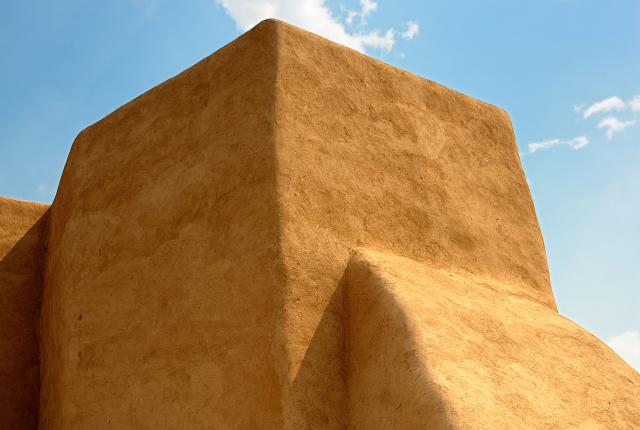SUNBAKED BRICKS OF MUD WERE an easy building material for Spanish colonists, who erected churches atop stone foundations and then plastered the walls with more mud—reapplying it when rains washed it away. Longer-lasting cement stucco later gained favor, but it posed a risk: Like mud plaster, it can crack, letting water enter walls. But because it’s less breathable than mud, the water can’t escape, eroding the bricks.
In Ranchos de Taos, an active church community maintains the mud plaster on San Francisco de Asís Church. But in communities where young people move away, the weakened labor force jeopardizes the care of historic buildings.
“The biggest challenge is the lack of a congregation,” says Frank Graziano, a founder of Nuevo Mexico Profundo and author of Historic Churches of New Mexico Today. “I interviewed so many people for my book who don’t know what’s going to happen to their church when they’re gone. Catholicism is waning, children are moving away from villages. Is someone going to step up?”
Cornerstones Community Partnerships works to inspire new stewards by offering hands-on opportunities to help such communities. One of its most popular events uses the courtyard of San Miguel Chapel in Santa Fe as a space to construct new bricks—a project that began as part of that church’s preservation work.
“It’s no longer for San Miguel,” says program director Jake Barrow. “That’s done. Now we take them to other churches.”


